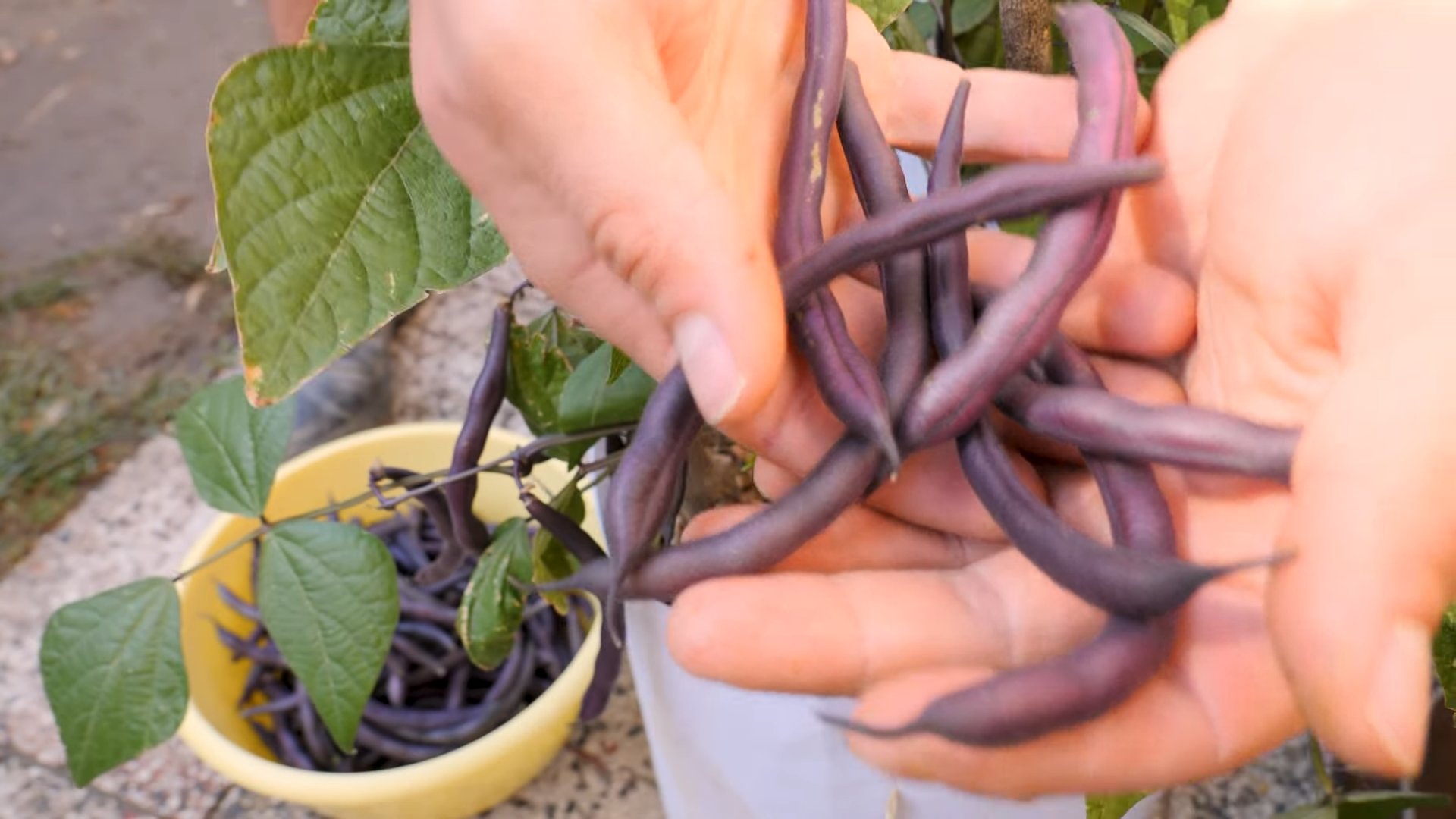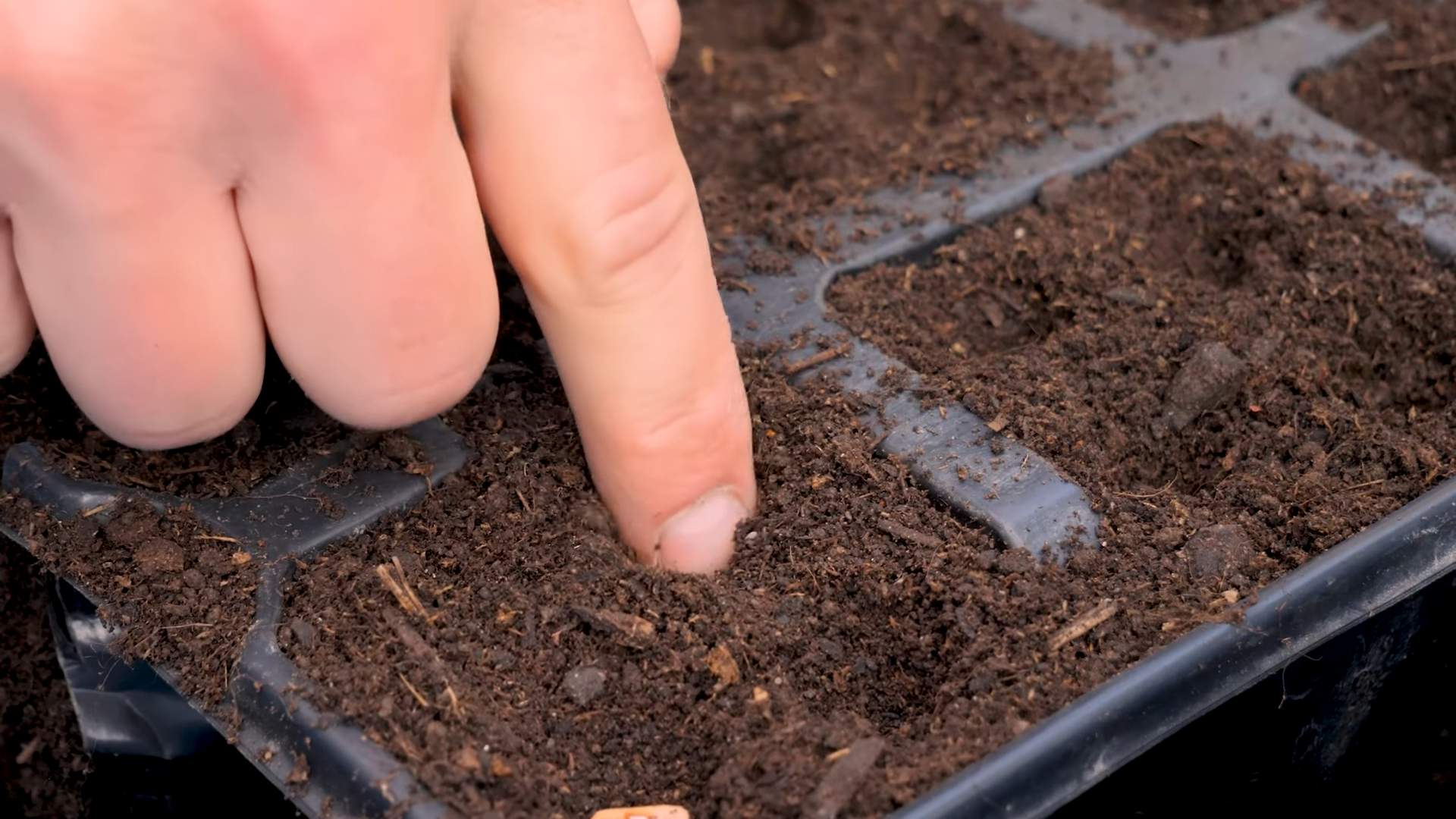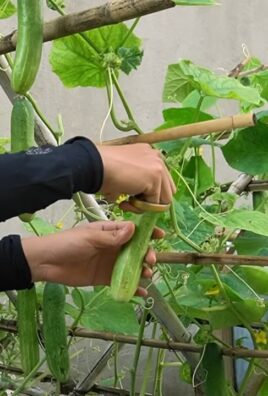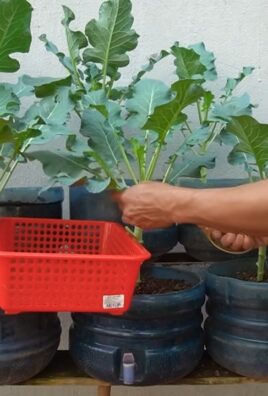Grow Bush Beans Container gardening has never been easier! Imagine stepping outside your door and harvesting fresh, crisp bush beans, grown with your own two hands. No sprawling garden needed – just a container and a little know-how. For centuries, container gardening has allowed people, from ancient Egyptians using clay pots to modern apartment dwellers, to cultivate their own food and flowers in limited spaces. It’s a testament to human ingenuity and our innate desire to connect with nature.
But let’s be honest, sometimes getting started feels overwhelming. That’s where this DIY guide comes in! I’m going to share some simple, yet effective tricks and hacks to ensure your grow bush beans container project is a resounding success. We’ll cover everything from choosing the right container and soil to providing the perfect amount of sunlight and water.
Why is this important? Because growing your own food is empowering! It’s a way to eat healthier, save money, and reduce your environmental footprint. Plus, there’s nothing quite like the satisfaction of nurturing a plant from seed to harvest. So, let’s ditch the overwhelm and dive into the wonderful world of container gardening. Get ready to enjoy a bountiful harvest of delicious bush beans, right from your own patio or balcony!

Growing Bush Beans in Containers: A Beginner’s Guide
Hey there, fellow gardening enthusiasts! I’m so excited to share my experience with growing bush beans in containers. It’s a fantastic way to enjoy fresh, homegrown beans even if you don’t have a sprawling backyard. Trust me, it’s easier than you think, and the reward of snapping those crisp, delicious beans right off the plant is totally worth it. Let’s dive in!
Choosing the Right Bush Bean Variety
First things first, you need to pick the right bush bean variety. Unlike pole beans that climb, bush beans stay compact, making them perfect for containers. Here are a few of my favorites:
* Blue Lake Bush: A classic choice, known for its excellent flavor and high yields.
* Contender: An early producer, great if you’re eager to harvest quickly.
* Provider: As the name suggests, this variety is a reliable producer and tolerates cooler temperatures.
* Derby: Another popular choice, known for its disease resistance.
* Roma II: Flat, Italian-style beans with a wonderful flavor.
Gathering Your Supplies
Before we get our hands dirty, let’s make sure we have everything we need. Here’s a checklist:
* Container: A pot at least 12 inches in diameter and 12 inches deep. The bigger, the better!
* Potting Mix: High-quality potting mix, not garden soil. Garden soil compacts too much in containers.
* Bush Bean Seeds: Choose your favorite variety!
* Watering Can or Hose: For keeping your beans hydrated.
* Fertilizer: A balanced, slow-release fertilizer or liquid fertilizer.
* Optional: A small trellis or stakes for extra support (though bush beans are generally self-supporting).
Planting Your Bush Beans
Okay, let’s get planting! This is the fun part.
1. Prepare the Container: Make sure your container has drainage holes. If not, drill some! Good drainage is crucial for healthy bean plants. Fill the container with potting mix, leaving about an inch or two of space at the top.
2. Sow the Seeds: Plant the bean seeds about 1 inch deep and 2-3 inches apart. I usually plant 4-5 seeds in a 12-inch container. Don’t overcrowd them!
3. Water Gently: Water the soil gently until it’s evenly moist. Avoid overwatering, which can cause the seeds to rot.
4. Find a Sunny Spot: Place the container in a location that receives at least 6-8 hours of sunlight per day. Bush beans love sunshine!
Caring for Your Bush Bean Plants
Now that your beans are planted, it’s time to nurture them. Here’s what you need to do:
1. Water Regularly: Keep the soil consistently moist, but not soggy. Water deeply when the top inch of soil feels dry. I usually water every day or two, depending on the weather.
2. Fertilize: Feed your bean plants with a balanced fertilizer every 2-3 weeks. Follow the instructions on the fertilizer package. You can use a slow-release fertilizer at planting time or a liquid fertilizer during the growing season.
3. Monitor for Pests and Diseases: Keep an eye out for common bean pests like aphids, bean beetles, and spider mites. If you spot any, treat them with insecticidal soap or neem oil. Also, watch for diseases like powdery mildew and bean rust. Proper watering and good air circulation can help prevent these problems.
4. Provide Support (Optional): While bush beans are generally self-supporting, you can provide a small trellis or stakes if you want to keep the plants upright and prevent the beans from touching the soil. This can help reduce the risk of disease.
Harvesting Your Bush Beans
The moment we’ve all been waiting for – harvesting!
1. Harvest Time: Bush beans are typically ready to harvest about 50-60 days after planting. The beans should be firm, plump, and easy to snap off the plant.
2. Pick Regularly: Harvest your beans regularly, every 2-3 days, to encourage continued production. The more you pick, the more they’ll grow!
3. Snap Them Off: Gently snap the beans off the plant, being careful not to damage the stems.
4. Enjoy Your Harvest: Enjoy your fresh, homegrown bush beans in salads, stir-fries, or as a simple side dish. They’re delicious!
Troubleshooting Common Problems
Even with the best care, you might encounter a few challenges along the way. Here are some common problems and how to address them:
* Yellowing Leaves: This could be a sign of overwatering, underwatering, or nutrient deficiency. Check the soil moisture and adjust your watering accordingly. Fertilize with a balanced fertilizer to provide essential nutrients.
* Lack of Flowers: Insufficient sunlight or poor soil can prevent flowering. Make sure your plants are getting enough sunlight and fertilize with a fertilizer that’s higher in phosphorus (the middle number on the fertilizer label).
* Pest Infestations: As mentioned earlier, aphids, bean beetles, and spider mites can be a nuisance. Treat them with insecticidal soap or neem oil. You can also try attracting beneficial insects like ladybugs, which prey on these pests.
* Disease Problems: Powdery mildew and bean rust can affect bean plants. Improve air circulation by spacing the plants properly and avoid overhead watering. You can also use a fungicide if necessary.
Extending Your Harvest
Want to keep those beans coming? Here are a few tips for extending your harvest:
* Succession Planting: Plant a new batch of seeds every 2-3 weeks to ensure a continuous supply of beans throughout the growing season.
* Choose Heat-Tolerant Varieties: If you live in a hot climate, choose bush bean varieties that are known for their heat tolerance.
* Provide Shade: During the hottest part of the day, provide some shade for your bean plants to prevent them from overheating.
Additional Tips for Success
Here are a few extra tips to help you succeed with growing bush beans in containers:
* Use a Self-Watering Container: If you tend to forget to water, a self-watering container can be a lifesaver.
* Mulch the Soil: Add a layer of mulch to the soil to help retain moisture and suppress weeds.
* Rotate Your Crops: If you’re growing beans in the same container year after year, rotate your crops to prevent soilborne diseases.
* Have Fun! Gardening should be enjoyable. Don’t be afraid to experiment and learn from your mistakes.
Growing bush beans in containers is a rewarding experience. With a little care and attention, you can enjoy a bountiful harvest of fresh, delicious beans right from your own patio or balcony. Happy gardening!

Conclusion
So, there you have it! Growing bush beans in containers is not only achievable, but it’s also a remarkably rewarding experience. We’ve walked through the simple steps, from selecting the right container and soil to nurturing your plants and harvesting your bountiful crop. But why should you take the plunge and try this DIY trick?
First and foremost, it offers unparalleled convenience. Whether you have a sprawling garden or just a small balcony, container gardening allows you to enjoy fresh, homegrown bush beans regardless of your space limitations. Imagine stepping outside your door and picking crisp, delicious beans for your dinner – a convenience that store-bought produce simply can’t match.
Secondly, it’s incredibly cost-effective. Starting from seeds is significantly cheaper than buying pre-grown plants, and with proper care, your container garden will provide you with a continuous supply of beans throughout the growing season. Think of all the money you’ll save at the grocery store!
Thirdly, it’s a fantastic way to connect with nature and learn about the growing process. There’s something deeply satisfying about nurturing a plant from seed to harvest, and container gardening provides a hands-on opportunity to witness the miracle of life unfold. It’s a therapeutic and educational experience for gardeners of all ages.
But the benefits don’t stop there. Container gardening also gives you greater control over the growing environment. You can easily move your containers to take advantage of sunlight or protect them from harsh weather conditions. You can also tailor the soil composition and watering schedule to meet the specific needs of your bush beans.
Ready to take your container gardening to the next level? Consider these variations:
* Succession Planting: Plant new seeds every few weeks to ensure a continuous harvest throughout the growing season.
* Companion Planting: Plant marigolds or nasturtiums alongside your bush beans to deter pests and attract beneficial insects.
* Vertical Gardening: Use a trellis or support structure to encourage your bush beans to climb, maximizing space and adding visual interest to your container garden.
* Experiment with Varieties: Try different varieties of bush beans, such as Blue Lake, Contender, or Provider, to find your favorites.
Growing bush beans in containers is more than just a gardening project; it’s an investment in your health, your well-being, and your connection to the natural world. It’s a chance to cultivate your own food, reduce your environmental impact, and enjoy the simple pleasures of homegrown produce.
So, what are you waiting for? Grab a container, some soil, and a packet of bush bean seeds, and get started today! We’re confident that you’ll be amazed by the results. And don’t forget to share your experiences with us! We’d love to hear about your successes, your challenges, and your favorite tips for growing bush beans in containers. Share your photos and stories on social media using #ContainerBushBeans and let’s inspire others to join the container gardening movement! We are eager to see your progress and learn from your unique experiences. Happy gardening!
Frequently Asked Questions (FAQs)
What is the best size container for growing bush beans?
A container that is at least 12 inches in diameter and 12 inches deep is ideal for growing bush beans. This size provides enough space for the roots to develop properly and allows for adequate drainage. You can grow several plants in a single large container, but be sure to space them appropriately to avoid overcrowding. Overcrowding can lead to reduced yields and increased susceptibility to pests and diseases.
What type of soil should I use for growing bush beans in containers?
Use a well-draining potting mix specifically formulated for containers. Avoid using garden soil, as it can become compacted in containers and hinder drainage. A good potting mix will retain moisture while allowing excess water to drain away, preventing root rot. You can also amend your potting mix with compost or other organic matter to improve its fertility and drainage.
How often should I water my bush beans in containers?
Water your bush beans regularly, especially during hot, dry weather. The soil should be kept consistently moist, but not waterlogged. Check the soil moisture by sticking your finger into the soil – if the top inch feels dry, it’s time to water. Water deeply, until water drains out of the bottom of the container. Avoid watering the foliage, as this can encourage fungal diseases.
How much sunlight do bush beans need?
Bush beans need at least 6-8 hours of sunlight per day to thrive. Choose a location for your container garden that receives plenty of direct sunlight. If you live in a particularly hot climate, you may need to provide some afternoon shade to prevent the plants from overheating.
Do I need to fertilize my bush beans?
Yes, bush beans benefit from regular fertilization. Use a balanced fertilizer, such as a 10-10-10 or 5-10-5, according to the package directions. Fertilize every 2-3 weeks during the growing season. You can also use a liquid fertilizer or compost tea to provide a boost of nutrients. Avoid over-fertilizing, as this can lead to excessive foliage growth and reduced bean production.
What are some common pests and diseases that affect bush beans?
Common pests that affect bush beans include aphids, bean beetles, and spider mites. Diseases include powdery mildew, bean rust, and anthracnose. Inspect your plants regularly for signs of pests or diseases. Treat infestations promptly with insecticidal soap or neem oil. Prevent diseases by providing good air circulation, avoiding overhead watering, and removing any infected leaves.
When should I harvest my bush beans?
Harvest your bush beans when the pods are firm, plump, and about the size of a pencil. The beans inside should be small and tender. Pick the beans regularly to encourage continued production. Overripe beans will become tough and stringy.
Can I grow bush beans indoors?
While it’s possible to grow bush beans indoors, it can be challenging to provide them with enough light. You’ll need to use grow lights to supplement natural sunlight. Choose a compact variety of bush bean and provide them with the same care as you would outdoors.
How do I store harvested bush beans?
Freshly harvested bush beans can be stored in the refrigerator for up to a week. To store them for longer, you can blanch them for a few minutes and then freeze them. You can also can or pickle your bush beans for long-term storage.
Can I save seeds from my bush beans to plant next year?
Yes, you can save seeds from your bush beans, but only if you are growing heirloom or open-pollinated varieties. Hybrid varieties will not produce true-to-type seeds. Allow some of the bean pods to dry completely on the plant. Once they are dry, remove the seeds and store them in a cool, dry place until next spring.




Leave a Comment